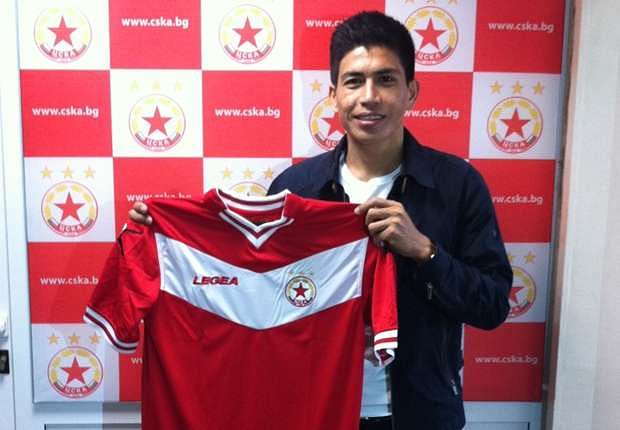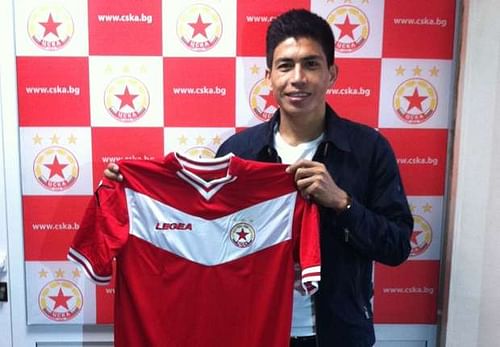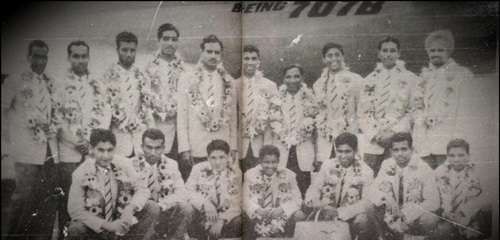
Top 5 Indian midfielders in the history of football
In football, the eleven players on the field each have an important role to play. The goalkeeper remains vigilant and is the last defender and the first attacker, often relaunching and recycling strategic plays. The ball then traverses the length of the field, up and down, left and right, cross-field, until it reaches the attacker who attempts to convert the opportunity and unleash a wave of euphoria.
Defenders make sure that the same does not happen in return, by staying compact and often putting their bodies on the line to salvage and maintain a hard-earned lead.
But it is the midfielders that make or break a team. This is the playing position that offers the most flexibility in creativity, tactics, movement and panache, but demands superhuman fitness in return. Speed, agility, reflexes, stamina: a midfielder needs to excel at all of these for the entire duration of the game and yet, when the plaudits are given out, midfielders are often overlooked in favor of players that have a specialized role in the team, whether it be keeping the ball out of the net or smashing it in with elegant ease.
Today we will be giving them their due and appreciate the top 5 midfielders in Indian history.
Honourable Mentions:
We decided to do an honourable mentions category for this post simply because there have been too many midfielders that have played outstanding football for the country and it feels imperative to give them the recognition that many of them, unfortunately, do not receive.
Mohammed Salim
Mohammed Salim’s inimitable on-the-ball skills delighted and surprised European crowds. He was the first Indian to sign a European contract and, although he only stayed there for a few months, his legacy remained large at Celtic FC. His contributions to his club team was of such magnitude that Mohammedan SC won their first-ever Calcutta Football League title and extended that to five successive wins. Salim remains a great example of a winger to this day.
Noor Mohammed
In the age of 1-2-7, 2-3-5 and 3-3-4 formations, the rare players who sat back assumed an important responsibility: they soaked up all of the pressure and were vital components of any title-chasing squad. Noor Mohammed was all of this and more. As a left-half, his positioning and tackling skills at his peak were unmatched in Asia and, unsurprisingly, he was a regular member of India’s playing eleven for more than a decade.
Mohammed represented India in the gold-winning 1951 Asian Games, 1948, 1952 and 1956 Olympics and played a pivotal role in India’s fourth-place finish at the 1956 Games. At the domestic level, Noor Mohammed remained a one-club player despite numerous offers from prestigious clubs and dedicated his entire career to the Hyderabad City Police team.
Renedy Singh
Renedy Singh’s natural skills were unmissable to the extent that he made his senior international debut at the age of 19. His talent lies in his being able to cross the ball with both feet and his dangerous dead-ball skills.
Singh signed a loan deal with CSKA Sofia in 2015 but his constant injuries have seen him transition from a player to a manager. He is currently the Assistant Manager of FC Pune City and the President of the FPAI (Football Players Association of India).
Jo-Paul Ancheri
A midfielder is undoubtedly the most complete player in any playing eleven. Jo-Paul Ancheri is the most complete player. Period. He has played as a striker, a defender and rumour has it even a goalkeeper (that’s not true but it wouldn’t be surprising if it were), but by far his most effective position has been as a midfielder.
His versatility meant that he was a mainstay of the Indian national team from 1992-2004, and his on-field persona was such that he also captained the Indian team through one of its roughest patches, laying the foundation and groundwork for players like Baichung Bhutia to come in and take the team up a notch.
Even after he retired from the international team, Ancheri has been a major proponent of football in India, founding the Indian Football Foundation (IFF) that aims to coach and bring up youth talent to ensure that the Indian football team has a healthy pool of players increasing in quality and being more competitive at the international level.
#5 Mohammed Yousuf Khan
A lot of football fans in India are unfortunately not Indian football fans. Those that maintain a casual interest in the current national team’s endeavors are aware of India’s struggles to even qualify for, let alone challenge other teams for, major football tournaments. But sixty years ago the setting was different. The Indian national team was widely regarded as the best in Asia and a fourth place finish in the 1956 Olympics meant that India was the first team ever from Asia to make it to the semifinals of the football event.
In this environment, Mohammed Yousuf Khan came into the side and played some of the most dynamic football seen by an Indian team. Known as the “bearded horse” for his quick covering of the pitch, Yousuf Khan terrorised defences with his relentless onslaught of passing and movement that would dizzy even the most practiced of defenders.
One of the few footballers India has produced that would qualify as ‘global’ or ‘international’ in their quality, Yousuf Khan played a vital role in India’s 1962 Asian Games triumph and was one of only two Indian athletes to be selected in the 1965 Asian All Stars XI.
Yousuf Khan was born in Andhra Pradesh on 5 August 1937 and was a prominent member of the Hyderabad City Police team. He also represented the tactics of the great Syed Abdul Rahim, the most successful coach in Indian football, on the field, ensuring that the master tactician’s plans came to fruition.
Unfortunately, the Indian Government and the AIFF did not recognize the value of Khan’s sacrifice, who, due to multiple head traumas, suffered from Parkinson’s disease and suffered a painful journey to death. He received almost no help or support during his lengthy period of illness and had to sustain his family on a pension of Rs. 3500 per month.
Accolades
1960 Rome Olympian, 1962 Asian Games gold medal winner, 1965 Asian All-Star XI, recipient of the Arjuna Award in 1966.

